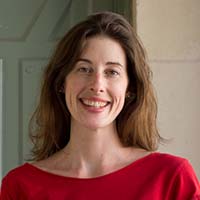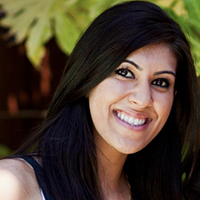Our group investigates chromosome organization and dynamics. We focus on meiosis, the specialized cell division process that gives rise to reproductive cells such as sperm, eggs, pollen, and spores. Meiotic errors underlie many human birth defects such as Down Syndrome, and also contribute to human infertility, especially in older women. Successful meiosis requires a unique series of chromosome interactions: each chromosome must pair with its homologous partner, and these paired chromosomes then exchange genetic information through homologous recombination. Crossover recombination gives rise to genetic diversity, and also creates physical links between chromosomes that enable them to segregate away from each other. We investigate these mechanisms using the nematode Caenorhabditis elegans as our primary model organism. This experimental system has enormous experimental advantages, including rapid and powerful genetics, robust genome editing, outstanding cytology, and the opportunity to directly observe meiosis through in vivo imaging. We are also studying the evolution and plasticity of meiosis by comparing these events in C. elegans to other nematodes, such as Pristionchus pacificus.
During meiosis chromosomes undergo remarkable and dynamic reorganization. A hallmark of meiotic entry is the reorganization of each replicated chromosome into a linear array of loops anchored to a central axis, which regulates many aspects of meiosis. We have characterized the molecular organization and function of chromosome axes through diverse biochemical and structural approaches, including crystallography (in collaboration with the laboratory of Kevin Corbett, UCSD/LICR) and superresolution microscopy (with Michal Wojcik and Ke Xu, UC Berkeley). Meiotic chromosomes also interact with molecular motors in the cytoplasm via a "LINC" complex, which enables them to move rapidly along the nuclear surface. By directly imaging these movements in living animals, we learned how they accelerate chromosomes' ability to find their partners and regulate their interactions with other chromosomes. In many organisms this movement is mediated by telomeres, the special repetitive DNA sequences at the ends of chromosomes, but in C. elegans this role has been acquired by "pairing centers," broad regions near one end of each chromosome that span hundreds of kilobases. We defined the molecular requirements for pairing center function and continue to investigate their roles in meiotic dynamics and regulation.
A longstanding mystery about meiosis is how each pair of chromosomes undergoes at least one crossover, while the total number of crossovers is usually quite low. Indeed, in C. elegans, as in many other species, one and only one crossover occurs between each pair of homologs. Recent evidence has indicated that the synaptonemal complex (SC), a special polymer that assembles between paired chromosomes, plays an important role in this crossover control. Through live imaging in C. elegans, we discovered that the SC behaves as a unique, liquid crystalline compartment. We are exploring how this unusual material self-assembles through phase separation, and how it regulates meiotic recombination. We have identified biochemical signals and a conformational switch within this compartment that regulate crossover formation. Insights into this compartmentalized signaling mechanism are illuminating how cells make a variety of switch-like, spatially localized decisions.
Meiosis underlies the evolution of eukaryotes, and is also shaped by evolution, showing fascinating variation in the details of its execution. For example, in many organisms the process of meiotic homolog pairing depends on recombination machinery, but C. elegans is among the known exceptions to this rule. To better understand how evolution can rewire meiotic regulation, we are developing another nematode known as Pristionchus pacificus, an emerging satellite model organism, for molecular analysis of meiosis. By comparing how this process works in two different nematodes (C. elegans and P. pacificus), we are uncovering core aspects of meiotic regulation that are shared across eukaryotes, and exploring how novel mechanisms such as recombination-independent pairing have emerged in specific lineages.
New insights in biology are driven by novel technologies. In particular, advances in fluorescence microscopy, DNA sequencing, genome editing, and mass spectrometry have enabled our lab to answer longstanding questions. Future advances will continue to influence our research directions. While our research group focuses on hypothesis-driven projects rather than methods development, we also work to expand our experimental toolbox through collaboration and innovation. For example, we developed methods for long-term in vivo imaging of adult C. elegans, which has enabled us to probe the dynamics of chromosome movement and synaptonemal complex assembly. We also adapted the auxin-inducible degradation (AID) system for use in C. elegans. This method enables rapid, robust protein depletion in response to an inexpensive, nontoxic small molecule, and also makes it possible to create more complex strains than we could using conventional loss-of-function alleles. We welcome potential researchers who are interested in applying cutting-edge tools to the study of chromosome organization.
I am studying the mechanisms of chromosome pairing and synapsis during meiosis in Pristionchus pacificus. By comparing this process to C. elegans, I am illuminating the evolution of sexual reproduction across eukaryotic lineages.Renzo Adilardi
Postdoctoral Researcher
My research in the lab focuses on gaining a mechanistic understanding of meiotic processes that shape genetic variation and the environmental factors that affect them. I am interested in nematode diversity and the valuable insight that comparative studies of meiosis can provide.Taniya Kaur
Postdoctoral Researcher
I would like to elucidate how chromosomes pair and initiate SC after pairing. I am interested in using synthetic tools to reconstitute and manipulate chromosome pairing in C. elegans and D. melanogaster.Hyung Jun Kim
Graduate Student
My goal is to understand how the interactions between chromosomes, the nucleoskeleton, and the cytoskeleton contribute to homologous synapsis during meiosis.Chenshu Liu
Life Sciences Research Foundation Fellow
I am defining the molecular composition of the synaptonemal complex using proximity-labeling methods, and working to reconstitute this dynamic material in vitro.Fan Wu
Postdoctoral Researcher
By investigating the molecular mechanisms underlying crossover regulation, I hope to learn how these pathways contribute to chromosome mis-segregation and aneuploidy.Liangyu Zhang
Postdoctoral Researcher
Postdoctoral Scholars
 Weston Stauffer
Weston Stauffer Zhouliang Yu
Zhouliang Yu Gina Caldas
Gina Caldas Baris Avsaroglu
Baris Avsaroglu Simone Kohler
Simone Kohler Yumi Kim
Yumi Kim Christina Whittle
Christina Whittle Ofer Rog
Ofer Rog  Joshua Bayes
Joshua Bayes Chitra Kotwaliwale
Chitra Kotwaliwale Sara Jover Gil
Sara Jover Gil Needhi Bhalla
Needhi Bhalla Peter Carlton
Peter CarltonGraduate Students
 Keith Cheveralls
Keith Cheveralls Christina Glazier
Christina Glazier Ericca Stamper
Ericca Stamper Aya Sato
Aya Sato Nicola Harper
Nicola Harper Ekaterina Zelenova
Ekaterina Zelenova Jacqueline Chretien
Jacqueline Chretien David Wynne
David Wynne Roshni Kasad
Roshni Kasad Stacia Rodenbusch
Stacia Rodenbusch Caroyln Phillips
Caroyln PhillipsTrainees, Interns, Etc.
 Hoang Pham
Hoang Pham Regina Bohn
Regina Bohn John Wang
John Wang Sabrina Lin
Sabrina Lin Kiana Moi
Kiana Moi Shyanne Amoyo
Shyanne Amoyo Zoe Lung
Zoe Lung Ariel Galor
Ariel Galor Laura Baldwin
Laura Baldwin Jannes Hopman
Jannes Hopman Kayla Baskevitch
Kayla Baskevitch Leticia Meza
Leticia Meza Amogh Jalihal
Amogh Jalihal Gilbert Garcia
Gilbert Garcia Elisa Wasson
Elisa Wasson Christine Tartaglia
Christine Tartaglia Rebecca Park
Rebecca Park Yunshu Fan
Yunshu Fan Edward Jung
Edward Jung Dinara Azimova
Dinara Azimova Sarah Afzal
Sarah Afzal Zoe Assaf
Zoe Assaf David Zhang
David Zhang Miles Pfaff
Miles Pfaff Alfonso Farrugio
Alfonso FarrugioIf you are interested in joining our research group, please write directly to Abby Dernburg. We welcome highly motivated postdoctoral scholars with expertise in cell biology, genome biology, biophysics, and affiliated fields. Most of our Ph.D. students come through the UC Berkeley graduate program in Molecular and Cell Biology, or the Biophysics Graduate Group. We encourage interested undergraduates to apply to the Undergraduate Research Apprenticeship Program, although we do occasionally take students through direct applications.